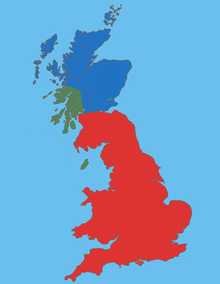1. Legend has it that before the Stone of Scone made its way to Scotland, it was used by which dreaming Biblical patriarch who as a pillow?
From Quiz Tales of the Stone
Answer:
Jacob
The Stone of Scone is also called Jacob's Pillow Stone. According to the book of Genesis, Jacob had tricked his older twin brother, Esau, out of his birthright, and was trying to put some space between himself and his brother. After receiving their father's (Isaac) blessing, Jacob fled and stopped at a place called Luz to rest; he apparently chose a stone there to use for a pillow. As he slept, Jacob had a dream (Genesis 28:12-13) where he saw angels going up and down a ladder stretching from the earth to heaven. In the dream, God promised Jacob that he would give the land to him and his descendants. When he awoke, Jacob took the stone he used as a pillow and poured oil over it. He renamed the town Bethel, and in Genesis 28:22 pledged "this stone that I have set up as a pillar will be God's house, and of all that you give me I will give you a tenth". There is a legend that the prophet Jeremiah brought the stone with him to Ireland, and eventually it made its way to Scotland.
 A little rusty on your history? Come learn a little about the world's historic realms in this photo quiz series. Here we will talk about the Picts. (If you would like to have a better view of the images/maps, please click on them to enlarge!)
A little rusty on your history? Come learn a little about the world's historic realms in this photo quiz series. Here we will talk about the Picts. (If you would like to have a better view of the images/maps, please click on them to enlarge!) 







 Quick Question
Quick Question